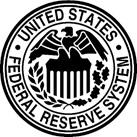Four Fed Chairs And Gold
 Last week, four Fed chairs gathered for a joint public appearance to talk about the global economy. What did they say about the Fed’s stance and what can we learn from that unusual meeting?
Last week, four Fed chairs gathered for a joint public appearance to talk about the global economy. What did they say about the Fed’s stance and what can we learn from that unusual meeting?
On Thursday, Janet Yellen appeared with her predecessors Ben S. Bernanke, Alan Greenspan (via teleconference) and Paul Volcker for a roundtable discussion at the International House, New York. This was the first time all four spoke publicly together. It should be an interesting meeting, given that the four Fed chairs span 37 years of Fed leadership (about one-third of the history of the world’s most influential financial institution) and that they differed significantly in their styles of monetary policy and communications to the public. Volcker stifled the soaring inflation by aggressive interest rate hikes while Greenspan and Bernanke cut interest rates decisively after negative shocks to the economy. Yellen is also raising interest rates, but her approach is very far from aggressive. Volcker and especially Greenspan were blowing smoke, using the obscure Fedspeak, while Bernanke and Yellen changed the Fed’s communication policy, making it more transparent and clear.
Perhaps surprisingly, the four Fed chairs expressed a remarkable amount of agreement in their views – perhaps the whole point of the meeting was to increase the confidence in the Fed and calm the fears of a recession. Volcker very politely said that his successors were all great, discreetly concealing the fact that Greenspan’s extended period of low-interest rates after 2001 fueled the subprime mortgage crisis. And all four predictably denied that the United States is in an economic bubble or that the economy is heading for a recession (although corporate profits clearly signal it). “This is an economy on a solid course, not a bubble economy”, which has made “tremendous progress” from the damage of the 2007-2009 financial crisis, Yellen said. We have to admit that “tremendous progress” is a very interesting description of the slowest recovery in history. But Yellen could be right in a sense that the U.S. economy is not in a bubble because the asset market bubble could have already burst (the S&P 500 began 2016 with its worst performance ever), but not evolved into a full-blown crash. This is why the Fed adopted a gradual pace of tightening – the U.S. central bank wants to avoid such a scenario, hoping for a gradual unwinding of the bubble. Bernanke also was in the mood for jokes, as he said: “I don’t see any particular reason to believe a recession is any more likely in 2016 than it was in 2015 or 2014.”, as if the slowdown in China, the contraction in the energy sector and the softness in capital expenditures never happened.
The bottom line is that last week the four Fed chairs gathered to talk about the global economy. It may indicate an urgent need to calm recession fears and increase the confidence in the Fed, as such an event was organized for the first time. Anyway, we believe that although the recession is not inevitable this year, the risk of its occurrence is higher than many assume. Therefore, if that risk materializes, gold will shine. Conversely, if the U.S. GDP growth accelerates suddenly, gold will be under pressure.
If you enjoyed the above analysis, we invite you to check out our other services. We focus on fundamental analysis in our monthly Market Overview reports and we provide daily Gold & Silver Trading Alerts with clear buy and sell signals. If you’re not ready to subscribe yet and are not on our mailing list yet, we urge you to join our gold newsletter today. It’s free and if you don’t like it, you can easily unsubscribe.
Disclaimer: Please note that the aim of the above analysis is to discuss the likely long-term impact of the featured phenomenon on the price of gold and this analysis does not indicate (nor does it aim to do so) whether gold is likely to move higher or lower in the short- or medium-term. In order to determine the latter, many additional factors need to be considered (i.e. sentiment, chart patterns, cycles, indicators, ratios, self-similar patterns and more) and we are taking them into account (and discussing the short- and medium-term outlook) in our trading alerts.

















